 A lot of gold jewelry making techniques haven’t changed much throughout the centuries. And this one is among them. Let’s have a look at the chain making so-called “loop-in-loop” technique. It was used thousands of years ago and it is still used by the jewelers today. You can easily compare a modern handmade gold chain with the chains produced by jewelers in Ancient Greece and Ancient Rome. Isn’t it exciting?
A lot of gold jewelry making techniques haven’t changed much throughout the centuries. And this one is among them. Let’s have a look at the chain making so-called “loop-in-loop” technique. It was used thousands of years ago and it is still used by the jewelers today. You can easily compare a modern handmade gold chain with the chains produced by jewelers in Ancient Greece and Ancient Rome. Isn’t it exciting?
Small circles of gold wire can be fused to create closed loops. These loops can then be woven together to make a chain.
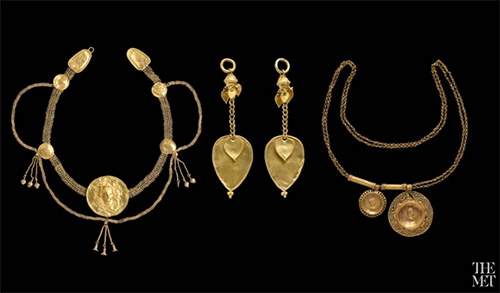
Chain making in modern days
To make this chain, many uniform gold rings need to be fabricated.
To start, the artisan takes a length of gold wire that she forms into a circle and places on a charcoal block, ready to heat.
Using a torch, the craftswoman anneals or heats the gold wire to make it more malleable.
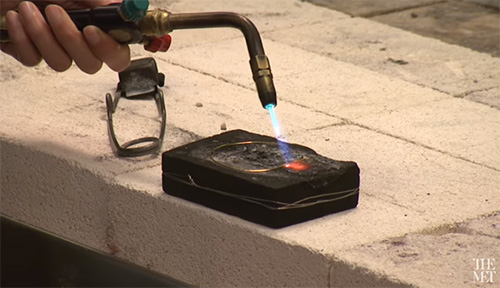
After heating, gold is dipped into an acid bath to remove any discoloration that is built up on the surface.
The next step is to anchor the wire to the dowel by feeding the wire through a small hole at the end of the dowel, then bending it at a right angle. This secures the wire firmly to the dowel.
The other end is secured in a vise and the wire is pulled taut.
With uniform pressure, the wire is carefully coiled around the dowel. Any sized dowel can be used to make chain links and will depend on the style and size of the chain you want.
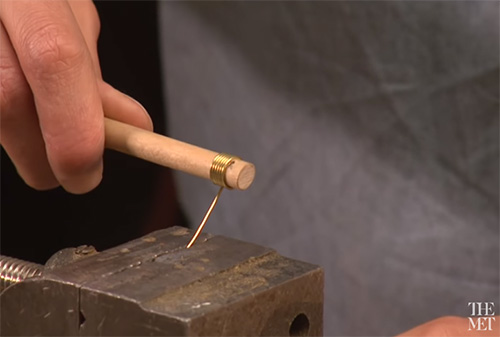
Once the coil is made, the wire is snipped and released from the dowel.
Cutting through the coil along a straight line produces multiple rings of the same diameter.
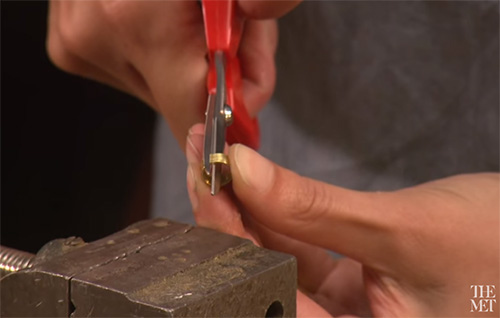
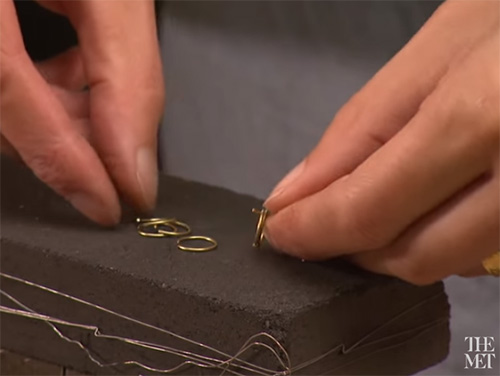
To prepare for fusing, each ring must be closed shut. So in order for the seam to close completely, the ends of the ring are pushed past each other a few times, creating a spring tension – this will allow the ends to line up perfectly.
Again, the rings are heated until the gold just reaches melting point and the seam fuses shut.
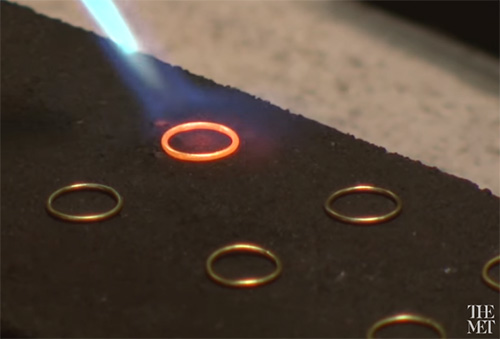
By fusing the rings, each loop will be completely uniform when it is manipulated into the chain.
Another way to close jump rings is to introduce solder into the seam. However, this creates a hard spot in the ring that will not bend and shape in a uniform manner.
The next step is to shape each ring for the weaving of the chain.
In this type of loop-in-loop chain, the rings are first squeezed into a bow tie shape with round pliers.
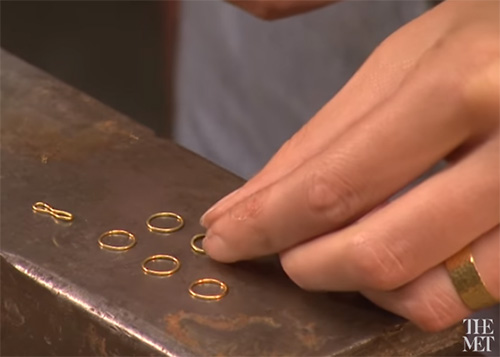
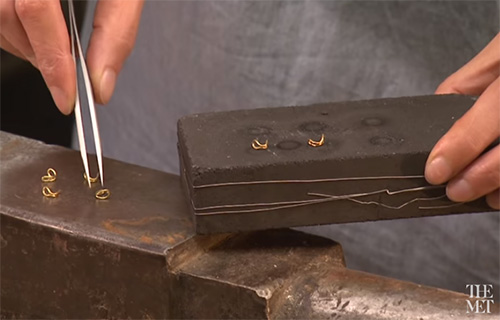
The next step is to take one end of each bow tie and compress it further with flat pliers, because as the chain is woven, the compressed smaller end can be fed through the previous loop.
Each loop is then bent into a round V-shape.
And once more, the links are annealed to soften them for weaving.
Now it's time to build the chain.
In preparation, the artisan places a scribe in the vise. And then, she begins to make the chain by taking the compressed end of each link and pushing it through the previous link.
Then, the craftswoman pushes the compressed end onto the scribe to open it up to match the opposite side.
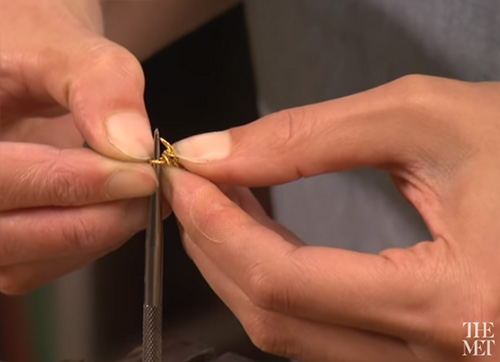
The link is curved closed with pliers.
This process continues until all the links are joined together.
Once the chain is made, each link is again pushed down on the scribe to even out each opening.
By making each opening in each link uniform, the chain will become more flexible.
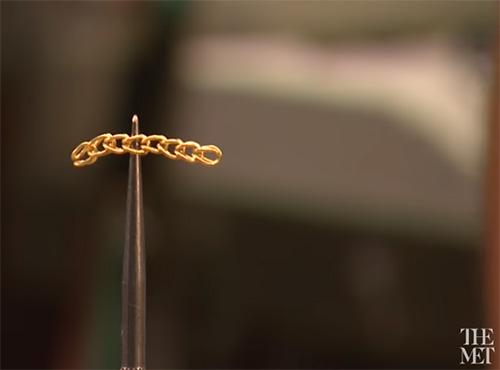
There are many chain making techniques. This loop-in-loop technique is an ancient technique that is still used today.
Showpieces from The Met (The Metropolitan Museum of Art)
Gold earrings, Silla Kingdom, Korea, the early 6th century
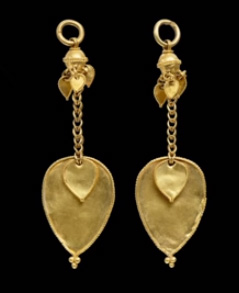
Gold necklace, Ancient Greece, the late 4th-3rd century B.C.
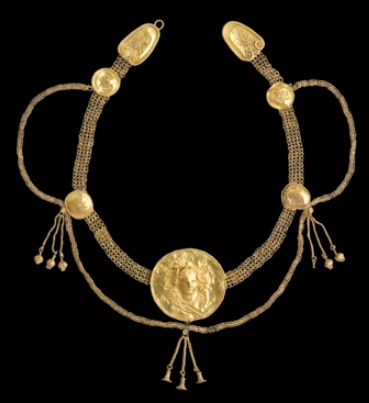
Gold necklace with coin pendants, Ancient Rome, the 3rd century A.D.
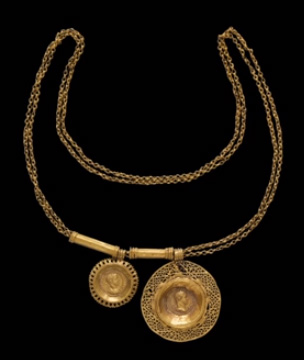
(c)


